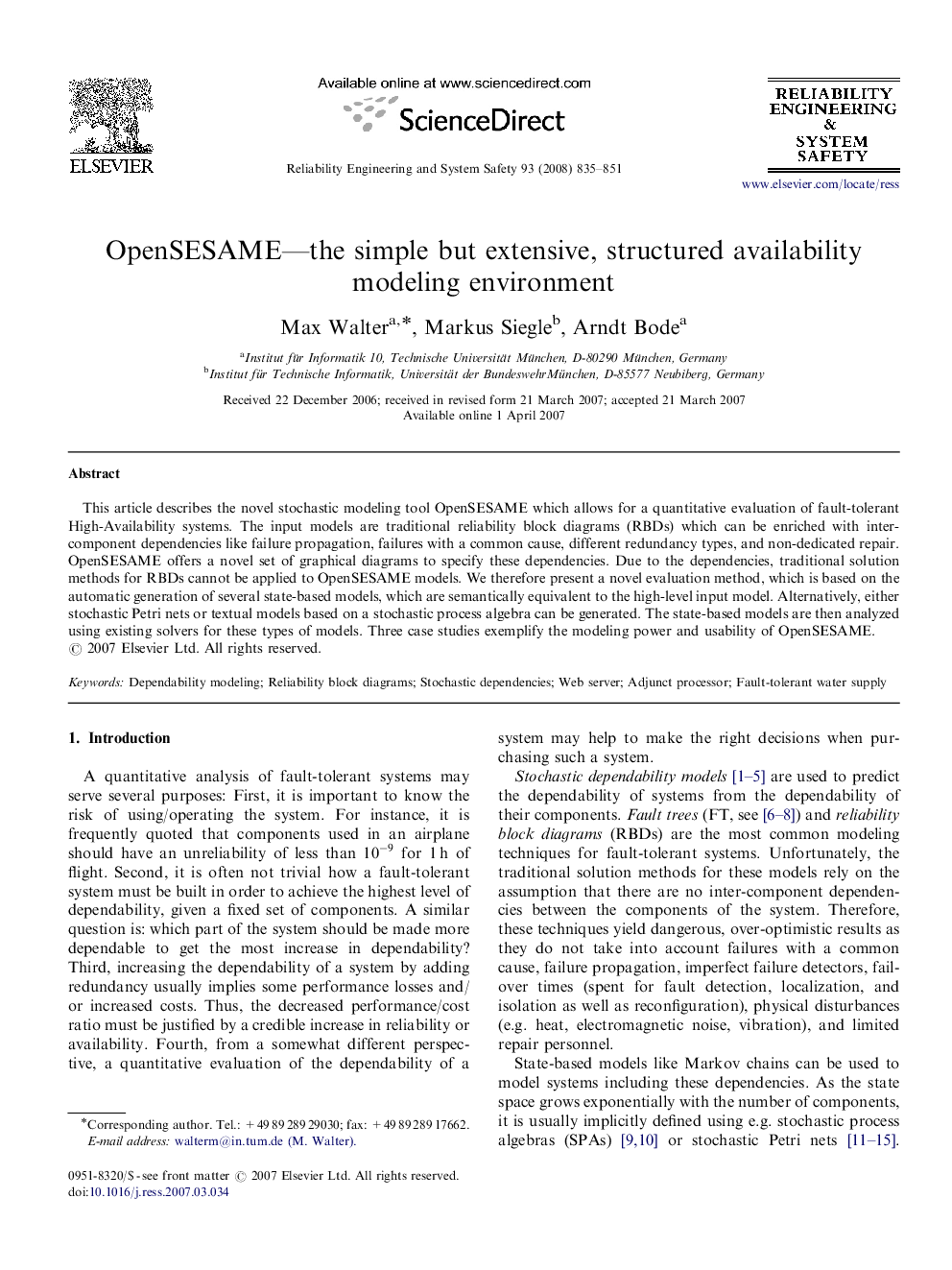| Article ID | Journal | Published Year | Pages | File Type |
|---|---|---|---|---|
| 808279 | Reliability Engineering & System Safety | 2008 | 17 Pages |
This article describes the novel stochastic modeling tool OpenSESAME which allows for a quantitative evaluation of fault-tolerant High-Availability systems. The input models are traditional reliability block diagrams (RBDs) which can be enriched with inter-component dependencies like failure propagation, failures with a common cause, different redundancy types, and non-dedicated repair. OpenSESAME offers a novel set of graphical diagrams to specify these dependencies. Due to the dependencies, traditional solution methods for RBDs cannot be applied to OpenSESAME models. We therefore present a novel evaluation method, which is based on the automatic generation of several state-based models, which are semantically equivalent to the high-level input model. Alternatively, either stochastic Petri nets or textual models based on a stochastic process algebra can be generated. The state-based models are then analyzed using existing solvers for these types of models. Three case studies exemplify the modeling power and usability of OpenSESAME.
